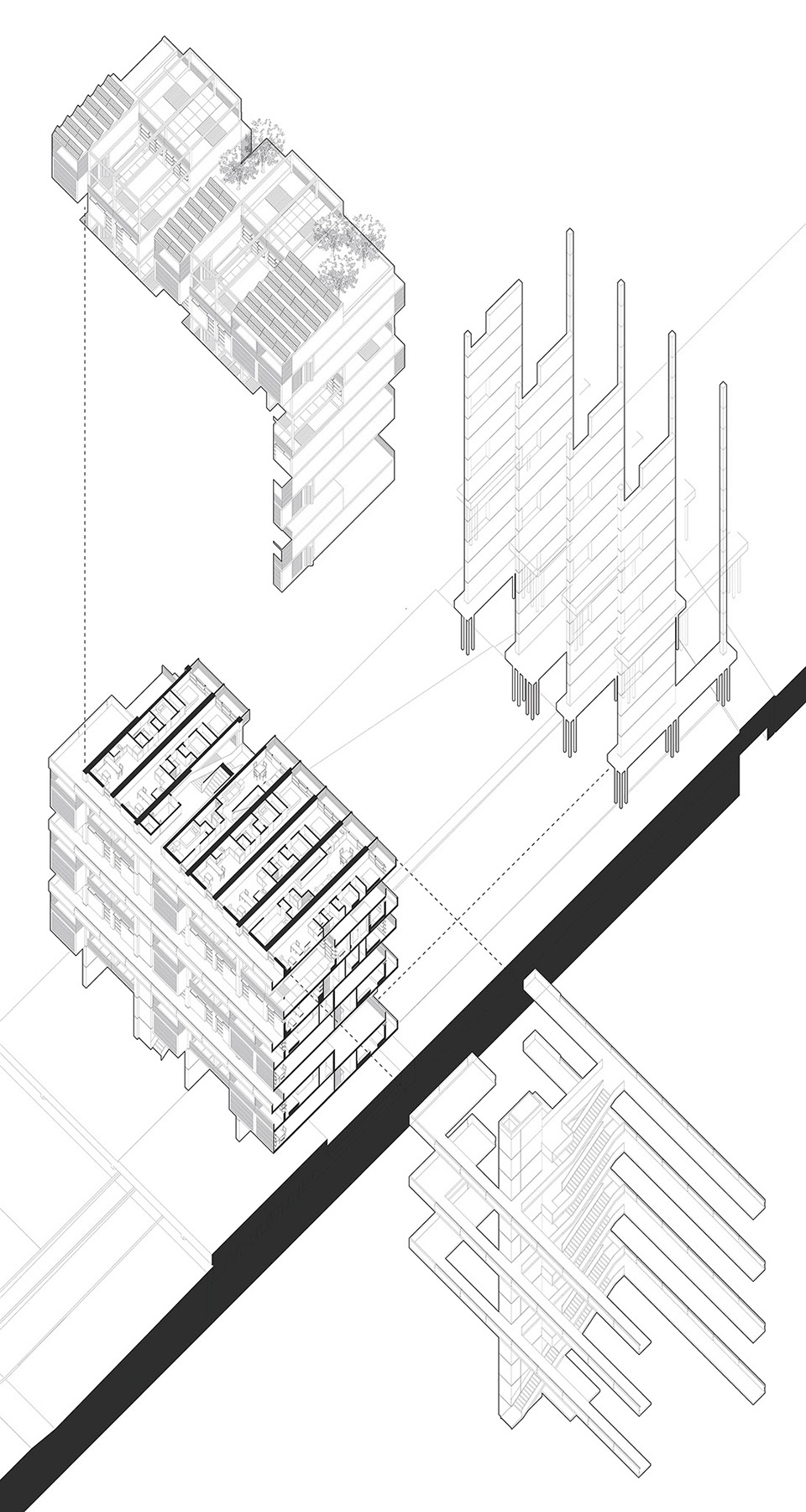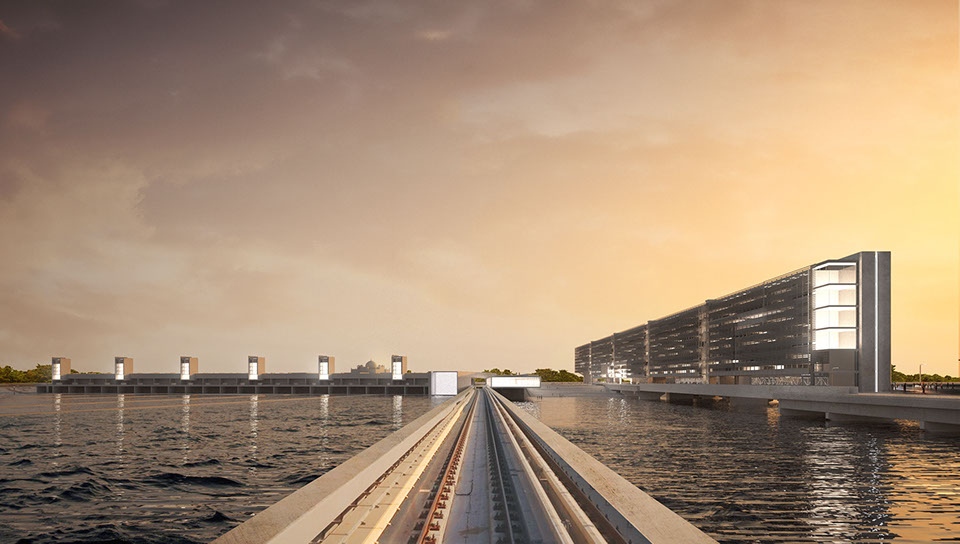New Delhi is bifurcated by the Yamuna River. Since the river floods from regional monsoons, the city has shied far back from the river’s dynamic edge, leaving a wide and mostly unoccupied floodplain that runs the length of the city. Industry has planted itself here along the river’s edge. Coupling industrial toxins with the city’s unchecked sewage dumping, the Yamuna is now completely devoid of biological life. And no one wants to be near it.
Because of that, Delhi’s lowest echelon has found refuge on the floodplain. Slum-dwellers use the land illegally for agriculture, growing poisoned crops to sell within the city’s informal markets. This social sub-condition goes unnoticed though, because the river is physically inaccessible. In fact, the only place where the river is even visible is from atop the city’s bridges. Hapur Bypass focuses on one of these bridge locations as a site for a new public territory that will rehabilitate the ecoregion and re-center New Delhi upon the once-sacred Yamuna River.

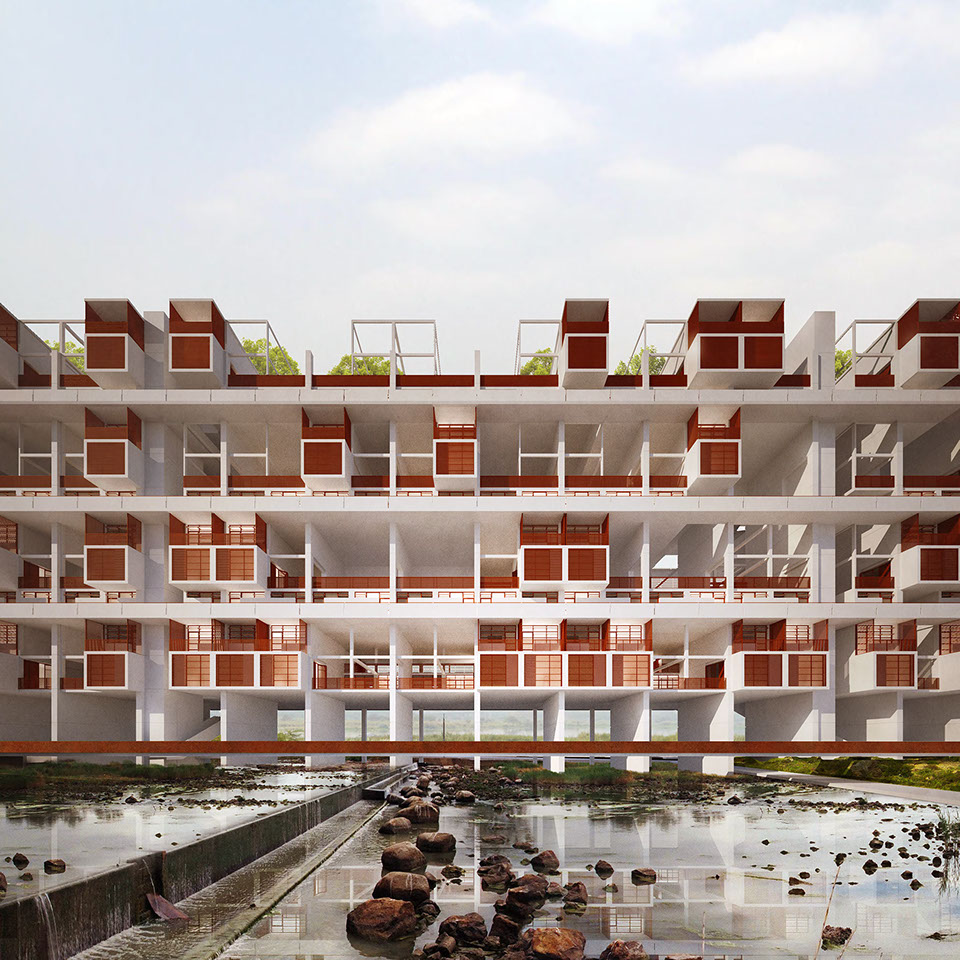
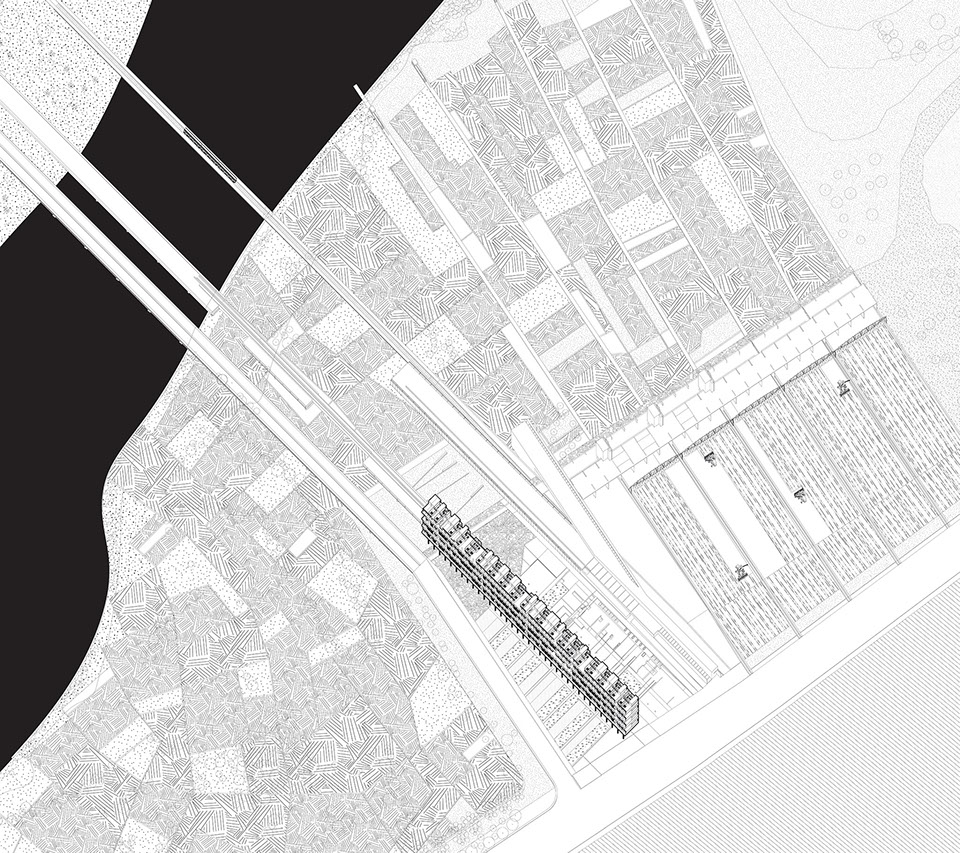
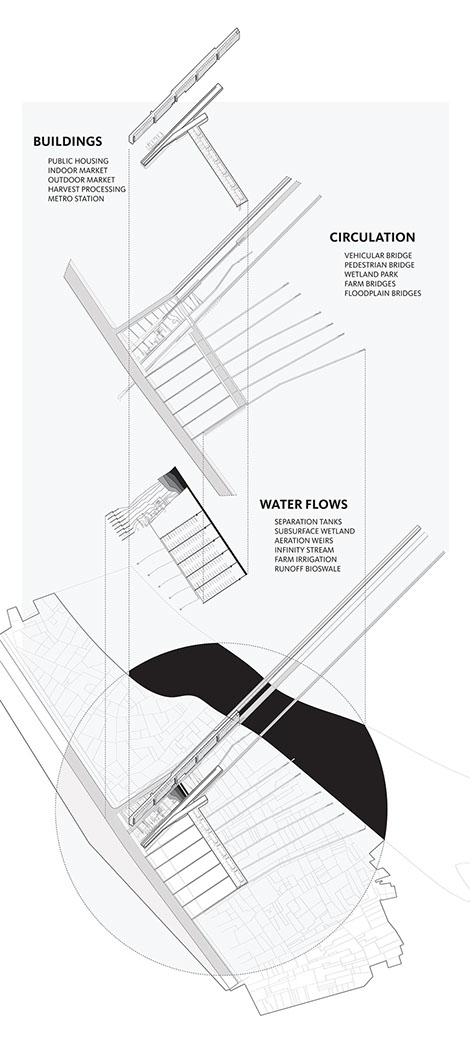
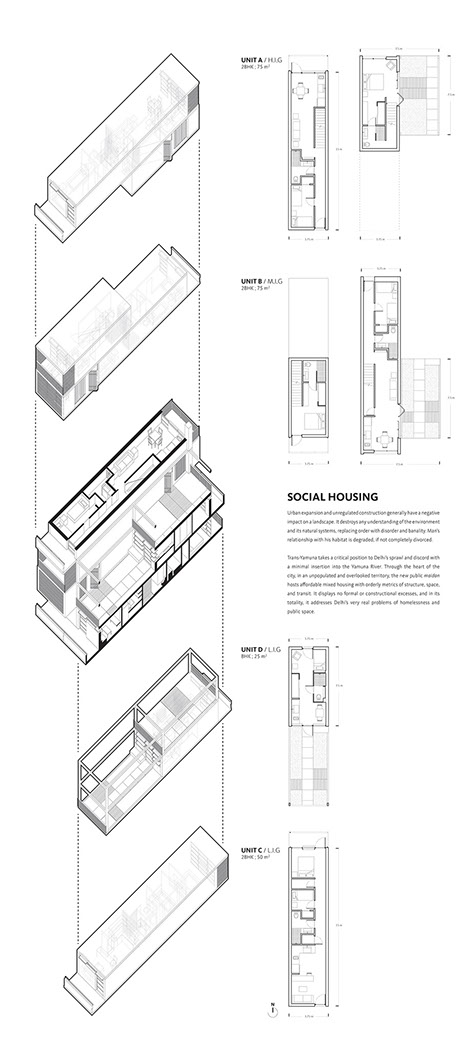
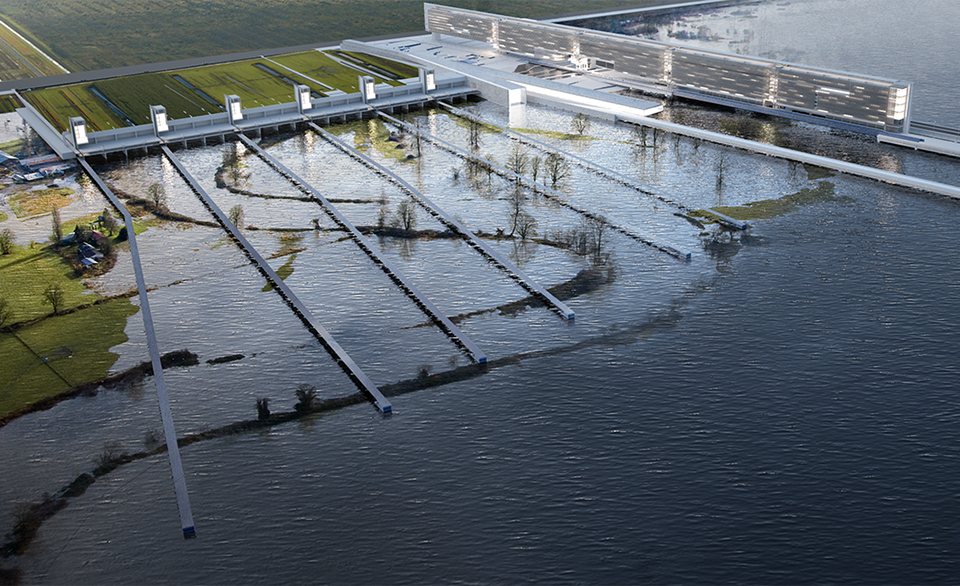
Hapur Bypass first addresses the city’s major programmatic and infrastructural deficiencies: mismanaged agriculture, wastewater treatment, commercial dysfunction, and lack of housing. Through affordable apartments, industrial harvesting, indoor and outdoor market stalls, retail space, and a metro station that connects citizens with a new cultural corridor between Hazrat Nizamuddin and Delhi Gate, the project hybridizes a new public maidan that respectfully elevates off the volatile monsoon floodplain. The land is relinquished back to the Yamuna and the floodplain is converted to an agrarian state of production.
This new community weaves everyday practices and cultural routines around an interactive subsurface constructed wetland. As one traverses the site toward the Yamuna, the process of water purification becomes visible in the stepped basins. Reaching the river’s embankment, one can see the newly cleaned water emerge to irrigate the agriculture, which, in turn, is harvested back toward the community’s market. Through this, the inhabitants understand the site, its natural systems, and their own position within the landscape.
